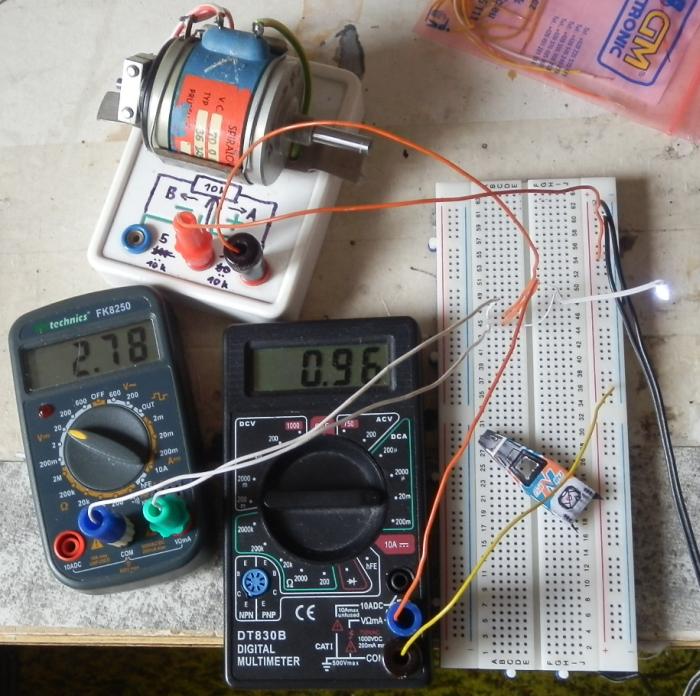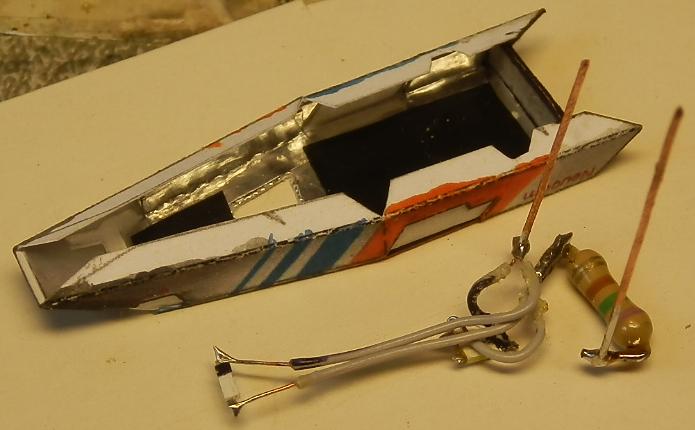Let there be light!

An example of a LED testing circuit:


Exact values don't matter; I used 12V power source and 10kiloohm variable resistor just because they were at hand.
We're building a cozy living room, not a lighthouse. Therefore we don't need much light. These diodes produce sufficient amount at 2.78 V and 0.96 mA each (plus or minus manufacturing tolerances, multimeter inaccuracy, contact resistances etc.). The lighting circuit will look like this:

These LEDs can't go in series because their combined voltages would exceed the 5 V supply I'm going to use. So the only remaining question is how big the limiting resistor needs to be:
Voltage across the resistor = supply voltage - LED voltage = 5 V - 2.78 V = 2.22 V.
We want current of 3*0.96 mA = 2.88 mA running through the resistor at this voltage.
Ohm's law: I=U/R or R = U/I = 2.22 V / 2.88 mA = 2.22 V / 0.00288 A = 770.8 ohms (careful with the units: only use plain volts, ampers and ohms, no mili or kilo).
The closest available resistor values are 750R and 820R. I found one 750 in my electronic scrapbox, so it was easy. An ohmmeter says it is only 736 ohms, so the resulting current will be 2.22 V / 736 ohms = 3.0 mA which means 1 mA for each LED. Perfect, let's go soldering:

The scale of the picture deceives a little. The gray-insluated wires come from computer IDE ribbon cable and the two thick rods are stripped wires from an ethernet cable. Black smudges mark negative pole of the LEDs because they were originally unmarked (detection procedure: connect the diode over a resistor to harmless 3 V and see which polarity lights it up). The shiny stuff in the hull is aluminium sticky tape, the black one is electric insulation tape which prevents short circuits on the aluminium.
After some fixing and insulating:

White glue would take too long to cure and would dissolve the surrounding paper. Solvent-based glue wouldn't be much faster and would make bubbles with poor insulating properties. Hot glue gun is clumsy for miniatures like this, but still usable.
Coming next: hull final assembly.